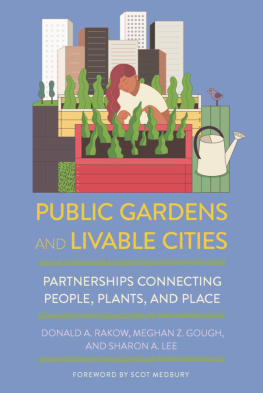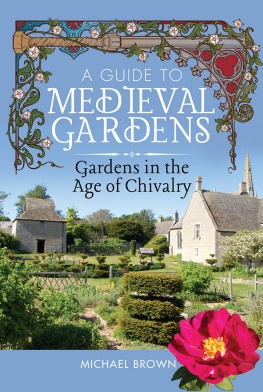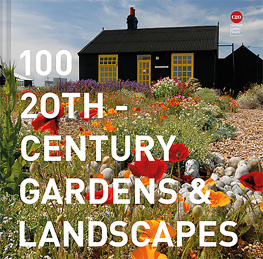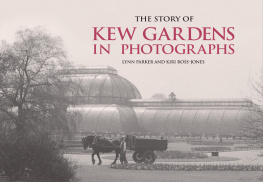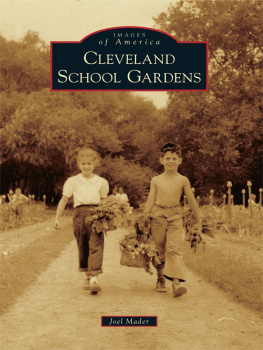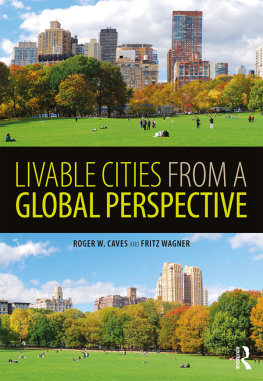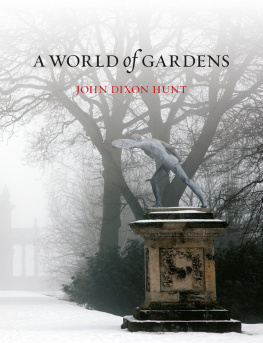
Copyright 2020 by Cornell University
All rights reserved. Except for brief quotations in a review, this book, or parts thereof, must not be reproduced in any form without permission in writing from the publisher. For information, address Cornell University Press, Sage House, 512 East State Street, Ithaca, New York 14850. Visit our website at cornellpress.cornell.edu.
First published 2020 by Cornell University Press
Library of Congress Cataloging-in-Publication Data
Names: Rakow, Donald Andrew, 1951 author. | Gough, Meghan Z., 1975 author. | Lee, Sharon A., 1944 author.
Title: Public gardens and livable cities : partnerships connecting people, plants, and place / Donald A. Rakow, Meghan Z. Gough, Sharon A. Lee.
Description: Ithaca [New York] : Cornell University Press, 2020. | Includes bibliographical references and index.
Identifiers: LCCN 2020019038 (print) | LCCN 2020019039 (ebook) | ISBN 9781501702594 (paperback) | ISBN 9781501751769 (pdf) | ISBN 9781501751776 (epub)
Subjects: LCSH: Urban gardensSocial aspectsUnited States. | Urban gardeningSocial aspectsUnited States. | Community development, UrbanUnited States. | Public spacesSocial aspectsUnited States.
Classification: LCC SB454.3.S63 R35 2020 (print) | LCC SB454.3.S63 (ebook) | DDC 635.09173/2dc23
LC record available at https://lccn.loc.gov/2020019038
LC ebook record available at https://lccn.loc.gov/2020019039
We dedicate this book to all those public gardens, community institutions, and individuals striving to make their cities greener, more livable, and healthier environments for the future.
Foreword
Public gardens matter. In cities and towns across the United States, garden-based organizations of all types are becoming catalysts for community revitalization. A new mandate has emerged: to foster and strengthen connections among the communities that surround them. In tandem with libraries and museums, public gardens are transforming themselves into third place community centers, providing common ground for diverse groups of people. At the same time, these organizations are reaching beyond their fences and gates to help build greener, more sustainable neighborhoods, involving themselves in a broad range of community partnerships and renewal projects. These community outreach activities and those taking place at the gardens themselves reveal an entirely new dimension of the mission of public gardens, one that may ultimately prove to be their most relevant and lasting civic contribution of all.
This essential book captures the spirit of these new collaborations, drawing from examples in cities across the United States that involve some of our most admired public gardens.
Traditional Roles
The mission and focus embodied today by American public gardens are an outgrowth of a long and somewhat complex history. While important and influential traditions can also be found in early civilizations in Asia, Africa, Mesoamerica, and elsewhere, gardens in the US have been mostly shaped by European antecedents. Public gardens in Europe evolved in part from the medicinal or physic gardens of the early Renaissance. These early gardens in turn gave rise to the first botanic gardens, which served as cradles of scientific discovery (and sometimes as instruments of economic imperialism, as in the company gardens of the colonies). Over time, and in parallel with the creation of the first public parks in the nineteenth century in both Europe and North America, the mission of public gardensand the size of their audienceshas expanded incrementally, leading directly to the multifaceted institutions we find today.
Contemporary Roles
Most contemporary public gardens in the United States embrace a diverse set of roles that are continuing to evolve in response to changing needs. Urban gardens seem to perform a particularly crucial function, serving as places of natural sanctuary and inspiration for harried urbanites as well as a refuge for plants and wildlife in the face of increasingly fragmented and scarce habitat. Contemporary public gardens also represent places of culture and art, featuring architecture, landscape architecture, planting design, and sculpture, even serving as venues for the performing arts and for changing exhibitions. Some public gardens continue to be centers of excellence in scientific research and have expanded from a traditional focus on plant taxonomy to other areas of research, such as ecology and conservation and even environmental psychology.
Public gardens have a key role in helping to create new generations of environmental stewards and educators, while also fostering environmental literacy throughout their communities. Watching a flower become a seed, and a seed become a plant, is a new miracle for every child who has the opportunity to experience it. Ask anyone working in the public garden field today how they first became interested in plants and nature, and it is likely that every one of them will reference a childhood experience in a natural or naturalistic setting like a garden. The educational experiences and programs offered by contemporary public gardens are not merely important; they can be considered essential, as the survival of our planet may ultimately depend on people learning to care both about and for the natural environment.
Another key aspect of public gardens today is the recent trend in modeling and interpreting environmental sustainability. Many institutions have expanded their remit to become leaders in environmental conservation, highlighting sustainability in their operations and in the construction of new gardens and facilities, with some even helping to reclaim brownfield sites. Plant conservation has become an essential role too. A nationwide network of public gardensthe Center for Plant Conservationcollectively works to help save the most endangered species from extinction, bringing needed research and visibility to the plight of threatened native plants.
Adding to an already broad scope of responsibilities, over the last two decades an entirely new direction for public gardenscommunity revitalizationhas found significant momentum across North America. It is this movement that forms the focus of this book. Public gardens have seized the opportunity to contribute substantively to strengthening the social and ecological fabric of their surrounding communities, in part through taking their programs out into neighborhoods and schools. At the same time, these institutions are reimagining the place of their garden spaces in their communities, becoming even stronger magnets for community interaction by underscoring a fundamental commitment to diversity and inclusion.
This new focus on community revitalization has especially resonated in US cities, where the need for greening projects and citizen engagement on environmental issues is particularly strong. With half of the worlds population now living in cities, these pioneering efforts by public gardens are developing program and partnership models that can be replicated in other cities in the United States and, in some cases, anywhere in the world.
The potential for public gardens to serve as agents of community revitalization has been recognized and supported by a broad range of both public and private funders. Through their generous financial support, these community leaders and public agencies have encouraged public gardens to provide their surrounding communities with wide-ranging benefits, including neighborhood safety and beautification projects, STEM education and teacher-training programs in the public schools, initiatives in food security and nutritional awareness, economic empowerment, and environmental protection and sustainability. The social, educational, environmental, and economic reach of North American public gardens has grown substantially over the past several decades and can be expected to continue to increase, especially in strategic partnership with other nonprofit organizations and government agencies.
Next page
